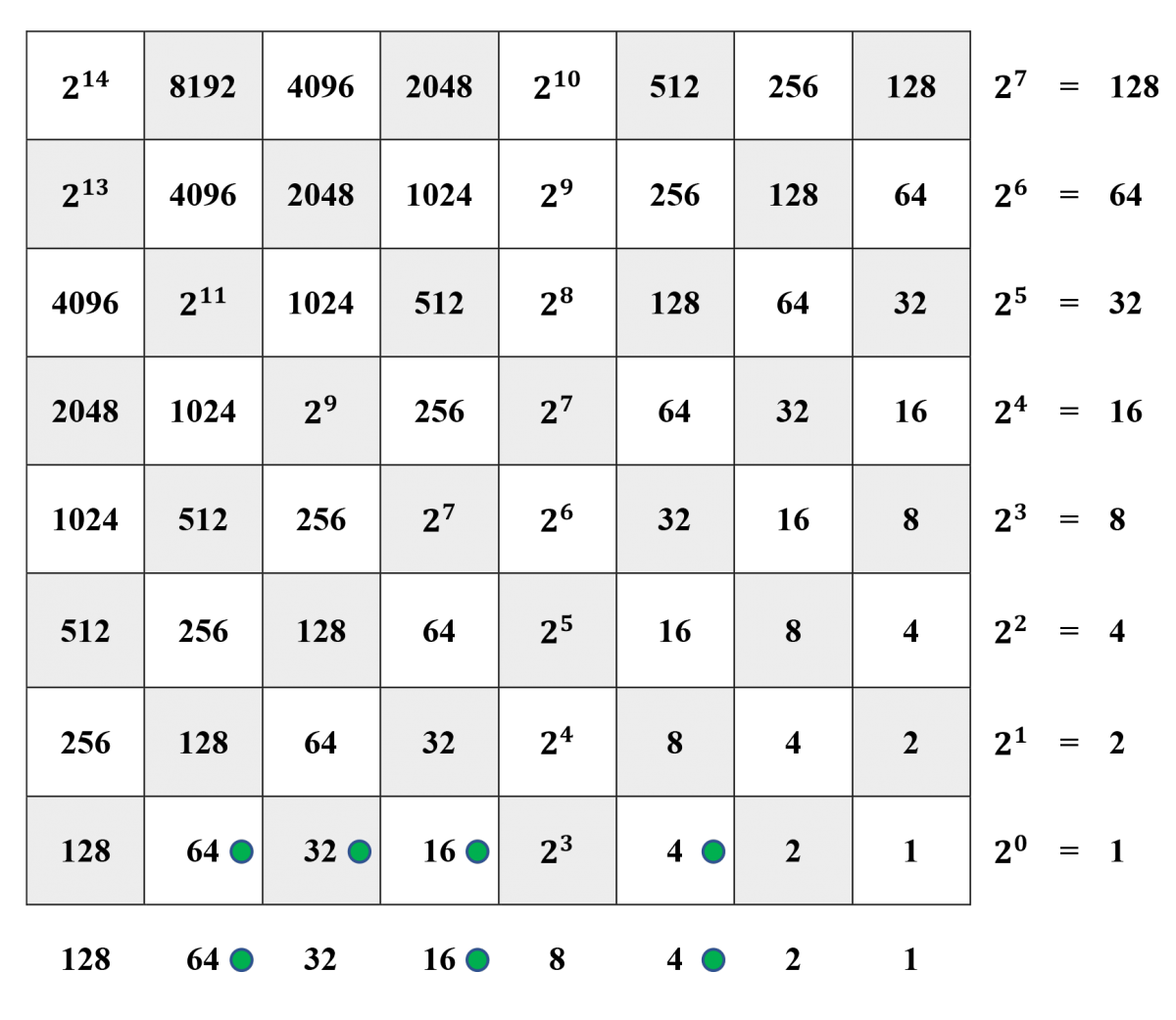John Napier's Binary Chessboard Calculator - Addition
How to compute the sum of two positive integers:
Use bingo chips, checkers, candy, etc. as counters.
Step 1. Place the first number on the bottom horizontal row.
Step 2. Place the second number below it in the margin.
Step 3. Combine all the counters on the bottom horizontal row.
Step 4. Abbreviate the board from right to left. That is, remove every two counters in a square and place one counter in the square to its left. This process often causes a "chain reaction" that "carries" into squares further to the left, requiring further abbreviation.
Step 5. The desired answer can now be obtained by converting the abbreviated sum back to a decimal number.
Example: That 116 + 84 = 200 is illustrated below.

Steps 1 and 2. First 116, decomposed as \[116 = 2^6 + 2^5 + 2^4 +{\phantom{2^3}}+2^2 = 64 + 32 + 16 +{\phantom{xx}}+4,\] is represented in the bottom horizontal row and \[84 = 2^6 + {\phantom{2^5}}+ 2^4 +{\phantom{2^3}}+2^2 = 64 +{\phantom{32}}+ 16 +{\phantom{xx}}+4,\] is recorded just below it in the margin.

Step 3. Next, all of the counters are combined in the bottom horizontal row.

Step 4. The board is abbreviated in two steps: First, from each square that had two counters after Step 3, one counter is moved to the square to the left and the other is removed. The result is shown above. Second, the abbreviation is repeated: from the square marked "32", one counter is moved to the left and the other is removed. The result is shown below.

Step 5: Now that each square along the bottom row contains at most one counter, the sum can be read from this row as 116 + 84 = 128 + 64 + 8 = 200.
Next: subtraction on the chessboard calculator